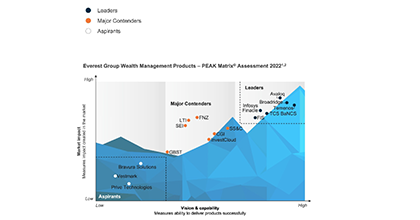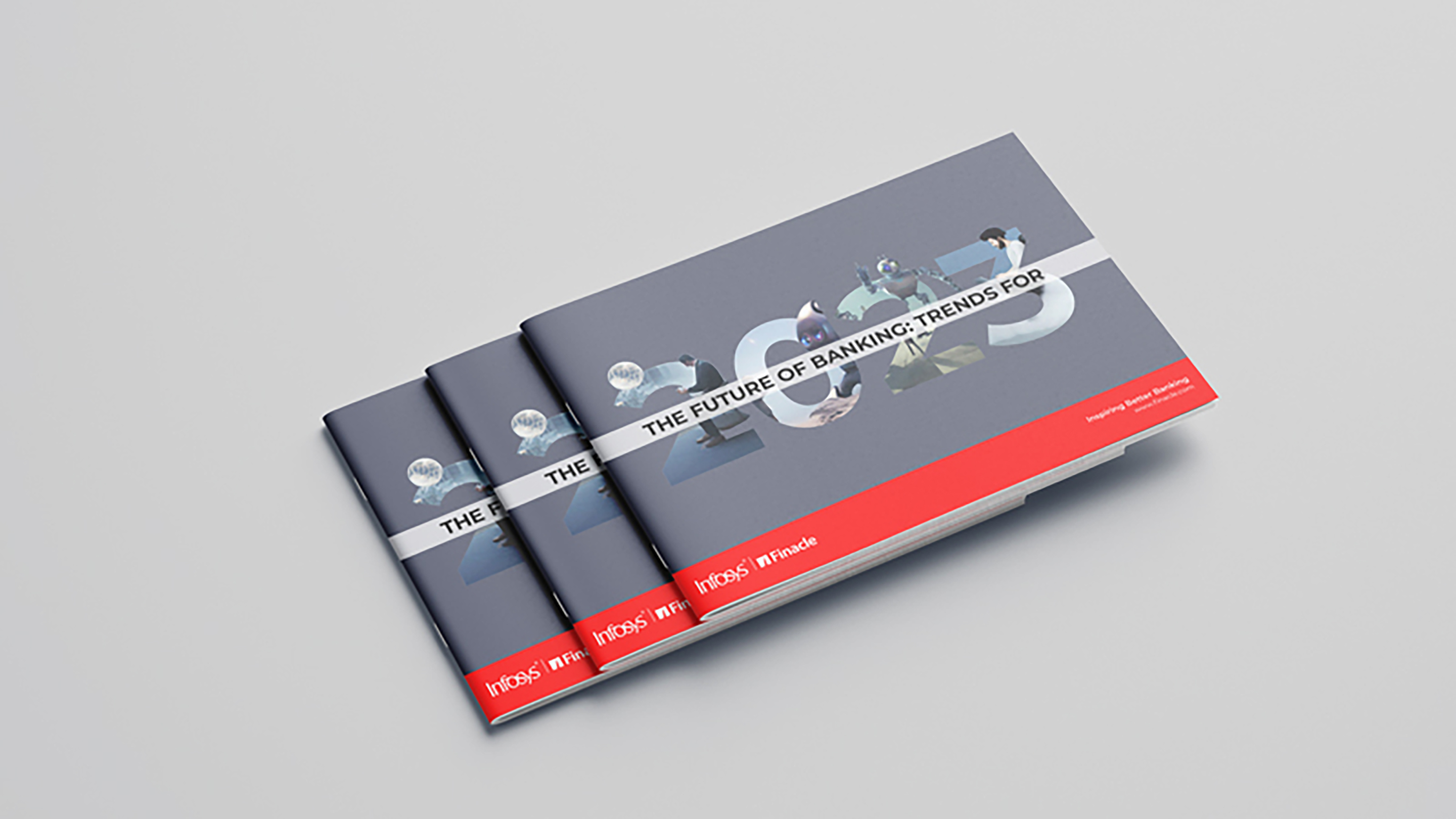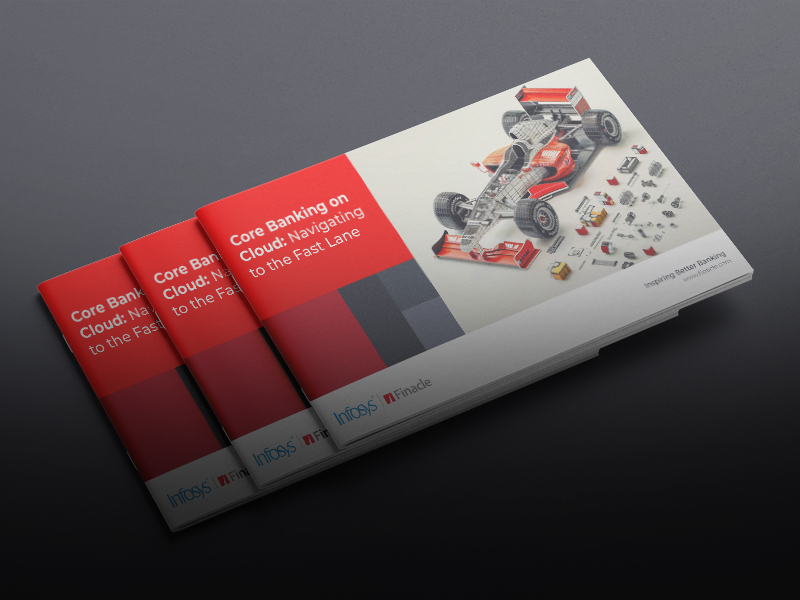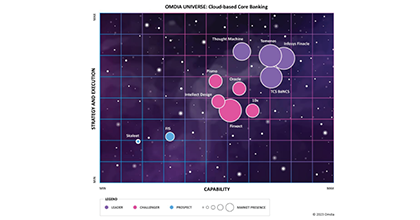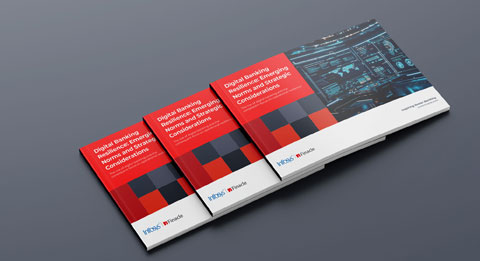-
![]() ESG in bankingESG-conscious banking should create new and future-proof value streams to build a sustainable and resilient business.Read More
ESG in bankingESG-conscious banking should create new and future-proof value streams to build a sustainable and resilient business.Read More -
![Everest Group PEAK Matri Everest Group PEAK Matri]() Everest Group PEAK MatrixA comprehensive solution delivering a full spectrum of wealth products as great experiences. It also improves the productivity of financial advisors and streamlRead More
Everest Group PEAK MatrixA comprehensive solution delivering a full spectrum of wealth products as great experiences. It also improves the productivity of financial advisors and streamlRead More -
![]() Subsidiary of an American Bank in IndonesiaFind out how a leading American bank adapts to a digitalized trade and supply chain finance operations as a part of its larger transformation by leveraging Finacle Trade Finance Solution Suite.Read More
Subsidiary of an American Bank in IndonesiaFind out how a leading American bank adapts to a digitalized trade and supply chain finance operations as a part of its larger transformation by leveraging Finacle Trade Finance Solution Suite.Read More
-
![]() Recomposing Banking: Leading the Digital ContinuumReport gives you a glimpse of the major areas where recomposing banking will create significant impact and value, Infosys Finacle has put together a report on..Read More
Recomposing Banking: Leading the Digital ContinuumReport gives you a glimpse of the major areas where recomposing banking will create significant impact and value, Infosys Finacle has put together a report on..Read More -
![]() Core Banking on Cloud: Navigating to the Fast LaneTake a deep dive into cloud-based core banking and explore the imperatives, opportunities and challenges, and the hallmarks of a robust solution.Read More
Core Banking on Cloud: Navigating to the Fast LaneTake a deep dive into cloud-based core banking and explore the imperatives, opportunities and challenges, and the hallmarks of a robust solution.Read More -
![]() Embracing Payments ComposabilityA step-by-step guide for maximizing Real Time Payment opportunities by embracing Payments Composability...Read More
Embracing Payments ComposabilityA step-by-step guide for maximizing Real Time Payment opportunities by embracing Payments Composability...Read More
-
![]() Shaping Banking’s Next: Banking Technology Trends for 2025 and BeyondThe banking industry has been balancing disruption and opportunity for several years now, and the pace of change shows no signs of slowing as we move into 2025 and beyond.Read More
Shaping Banking’s Next: Banking Technology Trends for 2025 and BeyondThe banking industry has been balancing disruption and opportunity for several years now, and the pace of change shows no signs of slowing as we move into 2025 and beyond.Read More -
![]() Virtual Accounts 2.0: Surpass Conventional Cash Management and Unlock Next-Gen PossibilitiesVirtual Account Management was a groundbreaking shift in the banking landscape, revolutionising use cases like cash concentration, pooling, centralised treasury management, and in-house banking (POBO, ROBO, COBO)Read More
Virtual Accounts 2.0: Surpass Conventional Cash Management and Unlock Next-Gen PossibilitiesVirtual Account Management was a groundbreaking shift in the banking landscape, revolutionising use cases like cash concentration, pooling, centralised treasury management, and in-house banking (POBO, ROBO, COBO)Read More -
![]() Unlocking Hybrid CloudAs banks push forward with their digital transformation agenda, cloud serves as a pivotal enabler. Each bank, at varying stages of adoption, crafts its unique path, dictated by context, regulations, and risk appetite.Read More
Unlocking Hybrid CloudAs banks push forward with their digital transformation agenda, cloud serves as a pivotal enabler. Each bank, at varying stages of adoption, crafts its unique path, dictated by context, regulations, and risk appetite.Read More
-
![]() Banking on CloudThis report from Infosys Finacle delves into the need for accelerating cloud adoption, highlights the current state of the industry, and puts forth key recommenRead More
Banking on CloudThis report from Infosys Finacle delves into the need for accelerating cloud adoption, highlights the current state of the industry, and puts forth key recommenRead More -
![]() Omdia Universe | Cloud-based Core BankingIn the report, Omdia highlights the following key capabilities of leading cloud-based core banking providers:Read more
Omdia Universe | Cloud-based Core BankingIn the report, Omdia highlights the following key capabilities of leading cloud-based core banking providers:Read more
-
![]() Emirates NBDEmirates NBD consolidates its operations on a single version for scalability, agility, and standardization.Read More
Emirates NBDEmirates NBD consolidates its operations on a single version for scalability, agility, and standardization.Read More -
![]() A Global Top 5 BankDiscover how a global top 5 bank headquartered in the US accelerated payments transformation.Read More
A Global Top 5 BankDiscover how a global top 5 bank headquartered in the US accelerated payments transformation.Read More -
![]() Union Bank of IndiaUnion Bank of India launches Union Virtual Connect (UVConn) by leveraging WhatsApp to provide customers personalized banking services.Read More
Union Bank of IndiaUnion Bank of India launches Union Virtual Connect (UVConn) by leveraging WhatsApp to provide customers personalized banking services.Read More

Can Banks Ward off Fintech Challenge With a Startup Mentality?
Blogs
In recent years, the Bank, that grand edifice of solidity and security from days past, has come under threat from sources ranging from regulators to customers to fraudsters to legacy technology. And today, it stands on the threshold of a new challenger – the technology-driven non-banking player, which sadly is getting into the heart of its business. The Fintech firms and the technology heavyweight (such as Apple, Google and Microsoft) are the prime challengers in this category.
Every bank is also a big technology user in its own right. Today, it is almost inconceivable for a conventional bank to operate without digital technology. Hence, it is interesting how technology firms still manage to eat into their pie.
One of the factors that has led to this development is the banks’ outlook themselves. Technology has been a representation of enhanced operational efficiency for all banks. But to technology firms, technology is supreme, and is key to their advancements. And this has spurred them onto exploring newer territories.
Where conventional banks view technology as a means to digitize a part of their business, technology players see far greater possibilities. And they are making it happen in a number of ways – from mobile wallets to P2P loans – that offer customers greater convenience, competitive prices, and certainly, a much better experience.
So where do conventional banks go from here?
The banks, no doubt, enjoy a level of customer trust and confidence, which is extremely hard for their new rivals to achieve and that gives them a head start over the others. What they do need to do is to be agile enough to come up to speed with the changes in their environment and respond appropriately and quickly.
For that, they need to develop the right technology solutions, which are superior to that of tech firms, and combine them with their innate strengths – reach, customer base, capital resources etc. This, in my view, is the best way to take the fight to the opposition, and a much more assertive approach than say, acquiring a technology startup or exploiting a legal loophole to block competition.
How can banks, given their current limitations, do this?
One way to is to sandbox such initiatives, completely isolate them from the rest of the bank and incubate them like a startup. This is like setting up a new bank free of limitations, within the old one.
This bank-within-the bank should be off the legacy system and therefore, free to use a completely new technology platform. It should be well funded, and make use of agile and continuous delivery to deliver small solutions, to start with. Each of these banks or services must treat the parent bank as an external entity and connect with it like any other third party would.
And once it takes off, the parent bank can decide whether it should stay independent or be integrated. DBS Bank, for instance, runs Digibank independent of its legacy environment.
The banking sector is not new to technology-led competition. When Citibank launched its large ATM network in India in the 1990s, and its hugely popular Suvidha account, it was expected to give incumbent Indian banks a hard time. But when ICICI Bank and SBI, rolled out their networks, they negated the foreign bank threat with ease.
These are still the early days for the Fintechs and the technology players in financial services. A large number of banks are experimenting with technology and slowly but surely moving up the ladder. For instance, we are already seeing innovative solutions from Indian banks, both in the private and public sectors.
Recently, the National Payments Corporation of India launched a Unified Payments Interface (UPI) to transform mobile payments in the country. Banks that join the platform will be able to deliver payment apps and wallets to pose a stiff challenge to Fintechs, who might need to reinvent their core proposition to stay relevant.
I am, therefore, optimistic that it is just a matter of time before the banks learn to master the tricks of technology and start using it for launching new products and services.


©2025 -Edgeverve Systems Limited | All rights reserved

